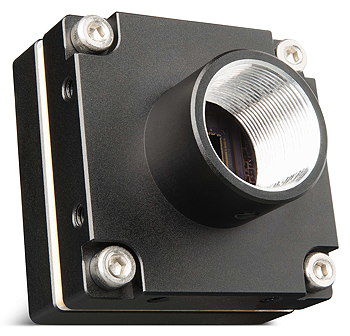James Cannon, Flir’s president and CEO, predicts that the camera will allow designers of inspection and automated production systems “to leverage deep learning faster and at lower costs”.
Flir says the camera combines an affordable machine vision platform with the power of deep learning to address complex and subjective problems such as recognising faces, or classifying the quality of products. It is based on Intel’s Movidius Myriad 2 VPU (vision processing unit), resulting in a compact, low-power camera, that is suitable for embedded or handheld systems.
Machine-builders will be able to load trained neural networks directly onto the VPU. In addition, users of Intel’s Movidius Neural Compute Stick can deploy their existing networks onto the Firefly. The design is said to reduce system size and improve speed, reliability, efficiency and security.

Flir claims that its Firefly camera is the first to use deep learning
“The Intel Movidius Neural Compute Stick enabled Flir to rapidly prototype, streamlining the early development of machine learning in the Firefly,” says Adam Burns, Intel’s director of computer vision products. “Now the Flir Firefly uses the compact, efficient Intel Movidius Myriad 2 VPU to perform real-time inference in the camera, without compromising the amazing levels of miniaturisation that Flir has achieved in this device.”
The camera measures 27 x 27 x 14mm and weighs 20 grams. Its power consumption is 1.5W.
After previewing the Firefly camera at the Vision exhibition in Germany in November, Flir plans to launch it commercially during 2019.

